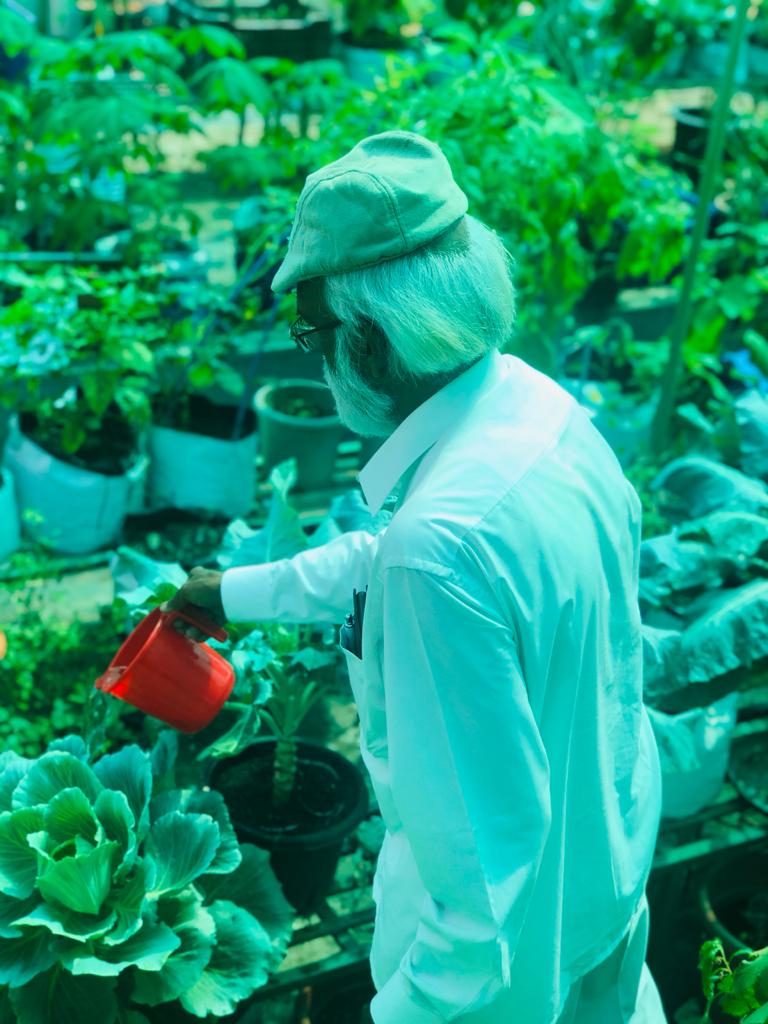While many may want to spend retired life in luxury, only a few may opt to toil away in the soil. Working as a bank manager all his life, K Rajmohan decided to devote his retirement to agriculture.
“Even though I didn’t have any prior experience in farming, with patience and practice, cultivating fruits became easier for me,” Rajmohan says, adding, “I have changed the conception that grapes grow only in hilly areas by cultivating them on my terrace in Kerala’s Thiruvananthapuram district using grow bags.”
In 2015, Rajmohan began his journey with 20 grow bags. Today, he has fruits and vegetables growing in 200 grow bags on his 1,250-square-foot terrace.
During the initial days, he cultivated vegetables such as tomato, cucumber, pumpkin, which gave him a good yield.
Today, Rajmohan’s garden includes snake gourd, coriander, chilli, cabbage, cauliflower, bitter gourd, ginger, turmeric, wild turmeric, bush pepper, groundnut, brinjal, spinach, beans, ivy gourd, ber apple, grapes, passion fruit, lime, papaya, banana, grapes, mulberry, strawberry, yam and corn.
The retired bank manager invested Rs 2 lakh for his rooftop cultivation. “Rooftop garden is an expensive affair but a one-time investment. Though the produce you reap will always be organic and fresh,” Rajmohan says.
Getting started as a roof-top cultivator

Talking about the preparations, he says that he bought plastic sheets and spread them on the terrace. Above this, metal stands and bricks were arranged to place the grow bags.
Apart from the grow bags, flowerpots and sacks were also placed on top of them to avoid water logging on the terrace. To keep the crops away from direct sunlight, Rajmohan covered his entire terrace with a shade net.
The 55-year-old tells me he collects the seeds or saplings from a nearby agro bazaar as they are “reliable sources”.
“Many neighbours and friends have asked me if all kinds of fruits and vegetables can be grown on a terrace farm. To clear their doubts, I started cultivating different plants on my terrace,” he says.
One query that cropped up was ‘how to grow grapes on your terrace’. And so, Rajmohad began cultivating grapes and also got a good yield from his first harvest of up to 5 kilos. Here’s how he did it.
Through the grapevine
After a little research, he says, “I collected two one-month-old grape seedlings from the agro bazaar and simultaneously prepared the grow bags for the plants.”
Soil preparation also plays an important role in the plant’s growth. Rajmohan let the soil sit in the sunlight for 10 days to destroy the microbes in it. Then, he added a dash of lime to the soil and kept it covered with a cloth for two weeks.
After this, he added equal parts of cow dung powder, coconut husk and vermicompost to the soil. Later, three-fourth of the grow bag was filled with this mixture.
“I then planted the two grape seedlings from the nursery bags into my grow bags. They were placed in a sunny and warm area of my terrace. When the grape vines grew, I kept only two healthy vines and removed the others, as my friends suggested. This, they said, would help with the growth of the plants,” he says.
Rajmohan then trimmed the leafy branches of the vines and built a trellis of bamboo to support the vines. Within nine months, the plants were ready for harvest. He now cuts the smaller branches of the plants when the vines fail to bear fruit. He adds that grapes bear fruit thrice in a year.
The grape vines need to be watered one to three times a day, depending on the weather. To get rid of insects, Rajmohan uses organic pesticides such as a solution of bird’s eye chilli and garlic or rice water and ash. The bugs on the leaves are destroyed by using a neem oil emulsion.
He says, “I use animal bone powder, neem cake, bio compost and groundnut cake as manure for the plants. Every two weeks, the manure is added into the grow bags.”
He usually distributes the produce he cultivates to his neighbours and friends. He also shares the seeds of his plants with those who wish to cultivate. Till date, many neighbours have also sought classes from Rajmohan about cultivating fruits and vegetables on a rooftop and he is more than willing to oblige.
Edited by Yoshita Rao
If you found our stories insightful, informative, or even just enjoyable, we invite you to consider making a voluntary payment to support the work we do at The Better India. Your contribution helps us continue producing quality content that educates, inspires, and drives positive change.
Choose one of the payment options below for your contribution-
By paying for the stories you value, you directly contribute to sustaining our efforts focused on making a difference in the world. Together, let's ensure that impactful stories continue to be told and shared, enriching lives and communities alike.
Thank you for your support. Here are some frequently asked questions you might find helpful to know why you are contributing?

